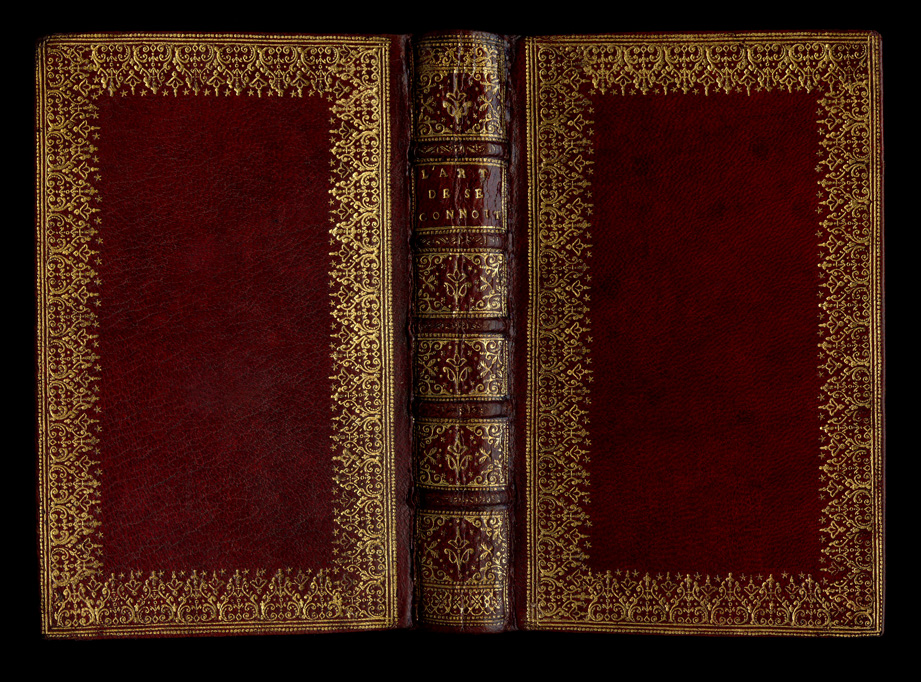

|
Below is the booksellers description of this beautiful dentelle binding* from the atelier of Luc-Antoine Boyet at the turn of the century. |
|
Elégante Reliure Parisienne plein maroquin rouge d'époque, plats ornés d'une fine dentelle dorée, dos à cinq nerfs ornés de caisson dorés en creux aux petits fers, titre doré, coupes et bordures dorées, dentelles intérieures dorées, tranches dorées sur marbrure. 2 parties in-12 (155 x 100 mm) reliées en un volume contenant la page de titre imprimée en rouge et noir, 7 feuillets non chiffrés d'Epître Dédicatoire et de Table, 492 pages de texte en pagination continue pour les deux parties (la page de titre de la seconde partie est intercalée entre les pages 204 et 207). Seconde édition de ce traité composé en 1692 par Jacques Abbadie lorsqu'il accompagnait le Maréchal de Schomberg à la Bataille de Boyne, avant qu'il ne devienne le porte parole de l'Eglise française de la Savoie. La première partie est un long traité de ce qu'est l'Homme, la seconde contient l'analyse des causes et des remèdes de sa corruption. Malebranche tenait ce traité de philosophie en grande estime. |
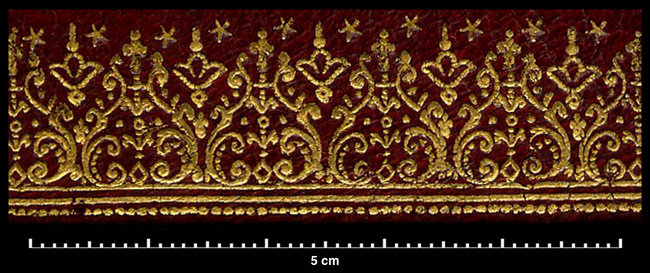
| We are going to look carefully at the gold tooled imprints of this binding in the hopes of then being able to recognize yet more Boyet examples, The dentelle shown above has been constructed with numerous small tools precisely applied in a linear progression. In the middle of this particular section of the detail, we can see a rare exception of a missing imprint (very small). This form of dentelle became very popular in the 18th century, however this 1700 example would be, I think, considered early and in fact Boyet may have been the first to popularize this form of decoration. |
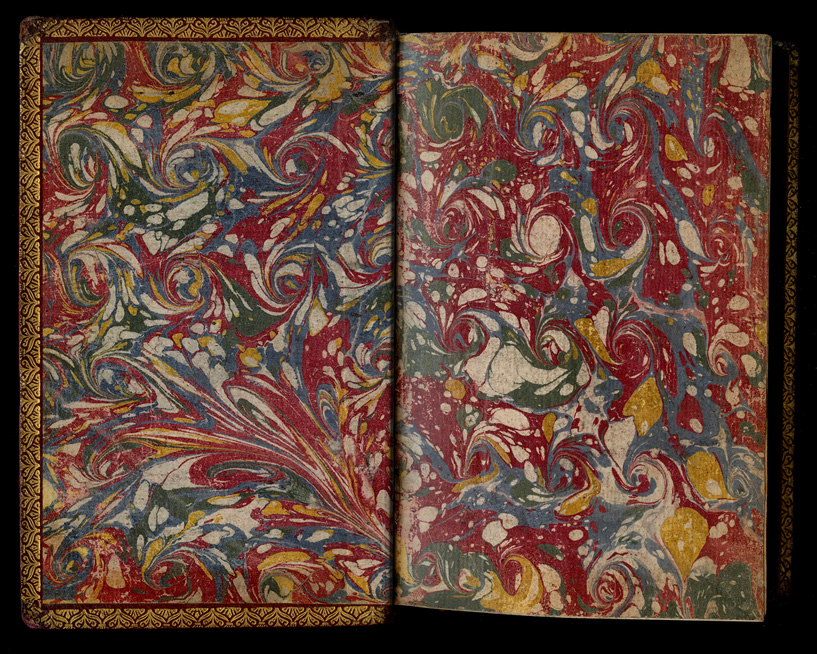
| In the second part of their 2002 Paris publication entitled: Reliures françaises du XVIIe siècle : Chefs-d'oeuvre du musée Condé, Isabelle de Conihout & Pascal Ract-Madoux, present a number of full colour reproductions of bindings which they attribute to Luc-Antoine Boyet. While it is not certain that Boyet actually applied the gold tooling to these bindings himself, it is thought that he was in charge of their production. This is one of the most complete and useful catalogues of Boyet bindings and tools, an invaluable reference and mine of information. On page 73, they reproduce a sample of marbled paper from a Boyet binding in their groupe 2 1690-1700, (item 27). This I have reproduced below in Comparative Diagram 1, along with a similar sample from the endpapers shown above. This specialized form of marbled paper is called "papier tourniquet". |
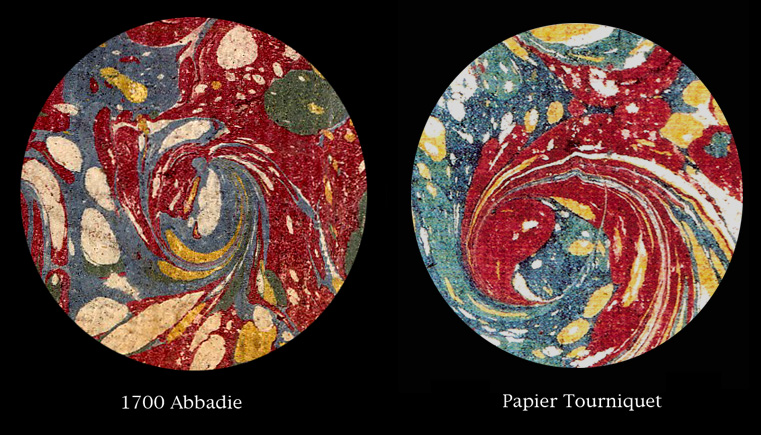

| On the inside of the boards we find what is sometimes referred to as an inner dentelle.** A wide roulette (roll) has been applied to the leather (turn-ins). This particular roll is actually larger than the area covered and we see only about two thirds of the complete design. Isabelle de Conihout & Pascal Ract-Madoux have included in their description of Boyets work, a page of selected rubbings from the more common imprints found on the bindings presented. In this limited presentation we find 6 palettes (I - VI), 5 roulettes (A - E) 6 large fleurons (1 - 6) and two tools (a = b) used in the construction of fans or wheels. This particular inner dentelle roulette does not appear among the 6 examples, however it is very similar in nature to a number of the other Boyet examples. |
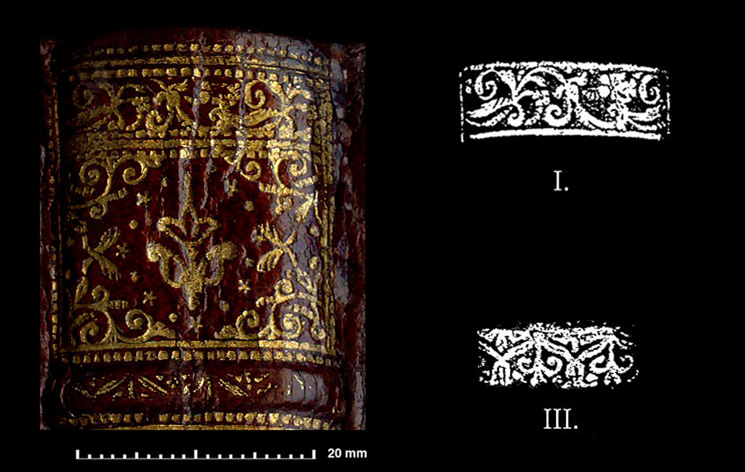
| In Comparative Diagram 3, I have reproduced 2 palette rubbings from the catelogue and a section of the 1700 spine, where we find an example of palette I. I have rotated the rubbing 180 degrees so that it corresponds with the actual imprint, also you will notice in the reproduced detail of item 27, below, this same palette, in the same orientation. I suspect that palette III (or something very similar) has been used to decorate the raised bands, while the same detail on item 27 has probably been accomplished with a different tool. |
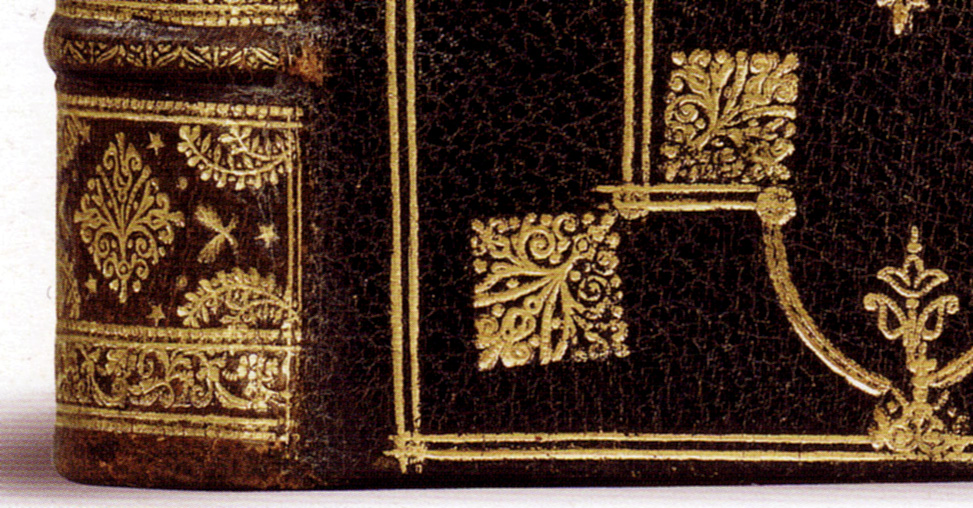
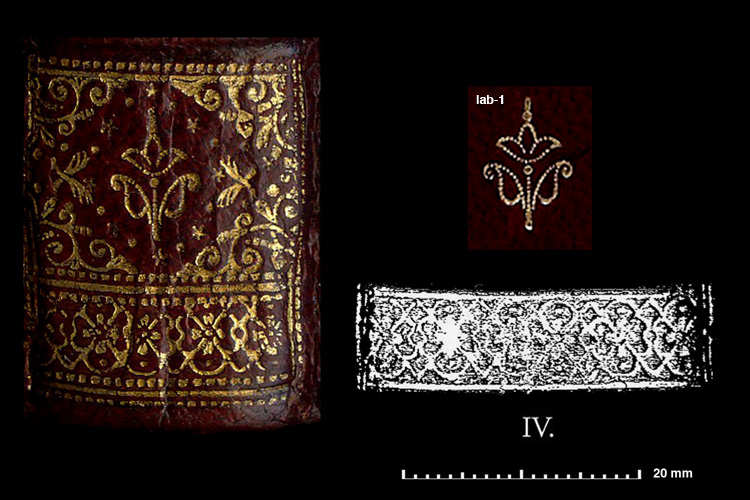
| In Comparative Diagram 4, I have reproduced the palette IV rubbing that corresponds with the actual imprint at the bottom of the spine. Also I have included a lab-1 imprint (Luc-Antoine Boyet) from another Boyet binding. This corresponds well with the imprint found in the spine compartment, also we see the same tool used on the boards of item 27, although the application somewhat different, the imprint not so finely detailed but amply filled with gold. This difference may be due to a number of factors. Firstly we see that the leather is of a different quality or texture. Item 27, appears to have a heavy grain, that perhaps requires a more robust application. The temperature of the tool may also be a facture, while we should not overlook the possibility that the work may have been accomplished by a different guilder. |
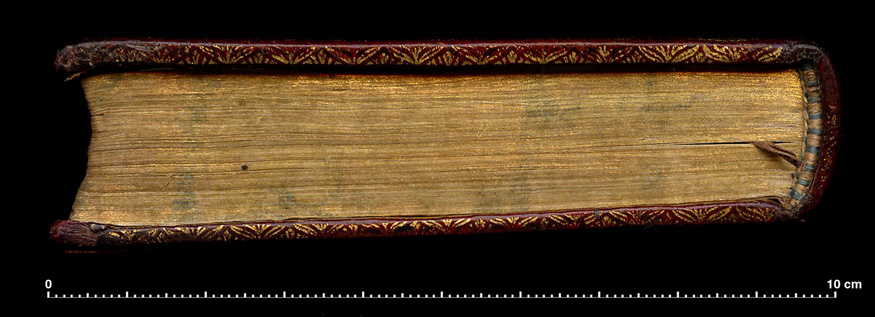
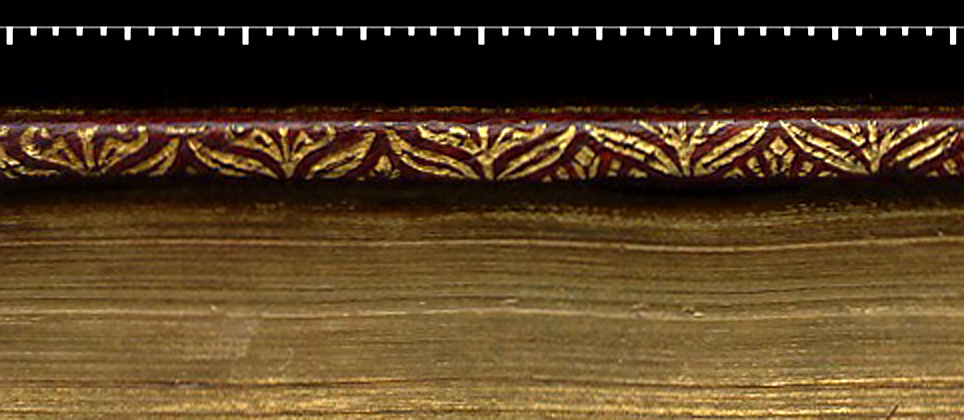
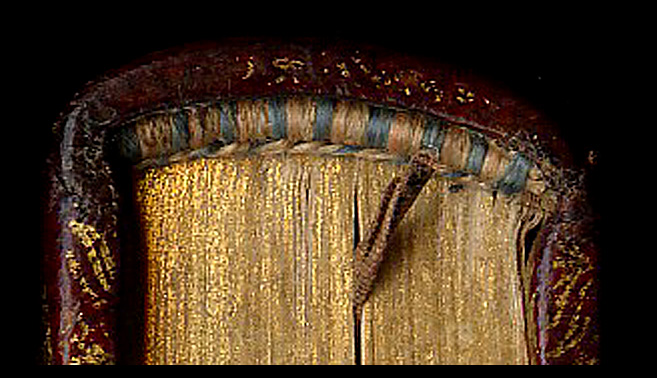
| In the enlarged details shown above, we can see that the same roll that was used for the inner dentelle has been applied to the board edges. Finally we come to the headband, (see definition below) some specialist in their descriptions of bindings, give detailed headband information, such as thread colours and number of beads. Headbands may serve as another reference by which we may be able to identify the work of a specific binder. |
|
Definitions from: ODLIS - Online Dictionary for Library and Information Science * Dentelle binding A style of 18th-century leather binding in which the covers are decorated on the outer and/or inner surface with broad, full borders gold-tooled in a finely detailed pattern resembling lacework. Click here to view a blankbook gold-tooled in dentelle style (Koninklijke Bibliotheek) and here to see dentelle decoration of the turn-ins on a deluxe binding (University of Pittsburgh Libraries). To see more examples, try a keyword search on the term in the British Library's Database of Bookbindings. headband In bookbinding, a band of woven cotton or silk, sometimes colored or multicolored, glued or sewn to the back of a book at the head, to protect the end of the bound sections and take the strain off the covering material at the top of the spine when the volume is pulled from the shelf (click here to see an example). The corresponding band at the lower end of the spine is called the tailband. Collectively, the headband and tailband are known as endbands. Definition from: Sage Old Books ** DENTELLE: Any fine scrollwork or lacy patterns which might be tooled into the leather covers of a book. However, the term is most usually encountered is "inner dentelle." This is the fold of leather turned in around the edges of the covers of a book, often decorated in gilt in a geometric design. The inner dentelle, in a fancy hand binding, may be the source for identifying the binder, who sometimes inserts his name in tiny letters along the inner dentelle at the bottom of the inside front cover. |
| Go to Digital Alchemy | return to the home page of cyclopaedia.org |